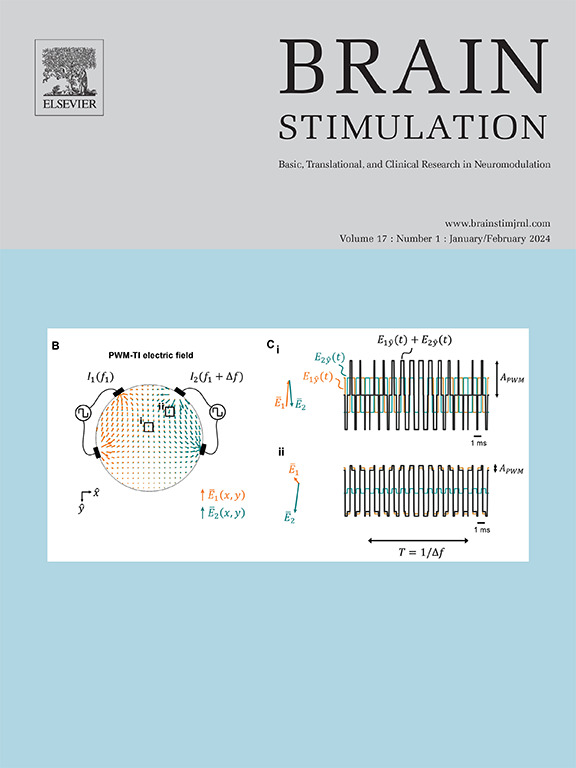Intracortical microstimulation of human somatosensory cortex induces natural perceptual biases
IF 7.6
1区 医学
Q1 CLINICAL NEUROLOGY
引用次数: 0
Abstract
Time-order error, a psychophysical phenomenon in which the duration in between successive stimuli alters perception, has been studied for decades by neuroscientists and psychologists. To date, however, the locus of these effects is unknown. We use intracortical microstimulation of somatosensory cortex in three humans with spinal cord injury as a tool to bypass initial stages of processing and restrict the possible locations that signals could be modified. Using a 2-interval forced choice amplitude discrimination paradigm, we first assessed the extent to which order effects are observed. Comparing trials where the standard stimulus was in the first or second interval, we found that systematic biases are exhibited, typically causing the intensity of the second stimulus to be overestimated The degree of this overestimation for individual electrodes was dependent on the perceptual sensitivity to changes in stimulus amplitude. To investigate the role of memory on this phenomenon, we implemented a 2-interval magnitude estimation task in which participants were instructed to ignore the first stimulus and again found that the perceptual intensity of the second stimulus tended to be enhanced by the first in a manner that depended on the amplitude and duration of the first stimulus. Finally, we repeated both paradigms while varying the inter-stimulus interval to examine the timescale over which these effects occur and found that longer inter-stimulus intervals reduced the effect size. These results show that direct activation of primary somatosensory cortex is sufficient to induce time-order errors.
皮层内微刺激人类体感皮层可诱发自然知觉偏差
时序误差是一种心理物理现象,是指连续刺激之间的持续时间会改变感知,神经科学家和心理学家对这种现象已经研究了几十年。然而,迄今为止,这些效应的位置尚不清楚。我们利用皮层内微刺激三位脊髓损伤患者的体感皮层作为工具,绕过最初的处理阶段,限制信号可能被改变的位置。我们首先使用一个双间隔强迫选择振幅辨别范例,评估了观察到的顺序效应的程度。比较标准刺激处于第一或第二区间的试验,我们发现会出现系统性偏差,通常会导致第二刺激的强度被高估。为了研究记忆对这一现象的作用,我们实施了一个双区间幅度估计任务,在该任务中,参与者被指示忽略第一个刺激,结果再次发现,第二个刺激的知觉强度往往被第一个刺激增强,而增强的方式取决于第一个刺激的振幅和持续时间。最后,我们重复了这两个范式,同时改变了刺激间的间隔时间,以研究这些效应发生的时间尺度,结果发现,刺激间间隔时间越长,效应的大小就越小。这些结果表明,直接激活初级躯体感觉皮层足以诱发时间顺序错误。
本文章由计算机程序翻译,如有差异,请以英文原文为准。
求助全文
约1分钟内获得全文
求助全文
来源期刊

Brain Stimulation
医学-临床神经学
CiteScore
13.10
自引率
9.10%
发文量
256
审稿时长
72 days
期刊介绍:
Brain Stimulation publishes on the entire field of brain stimulation, including noninvasive and invasive techniques and technologies that alter brain function through the use of electrical, magnetic, radiowave, or focally targeted pharmacologic stimulation.
Brain Stimulation aims to be the premier journal for publication of original research in the field of neuromodulation. The journal includes: a) Original articles; b) Short Communications; c) Invited and original reviews; d) Technology and methodological perspectives (reviews of new devices, description of new methods, etc.); and e) Letters to the Editor. Special issues of the journal will be considered based on scientific merit.
 求助内容:
求助内容: 应助结果提醒方式:
应助结果提醒方式:


